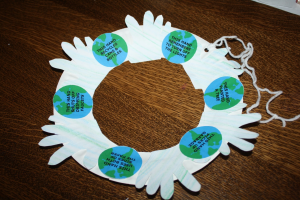Dyslexia is a common disorder of learning that can impact a child’s ability in reading, writing, or spelling. Dyslexia is not an indication of a lack of intelligence. It’s actually a neurological problem that requires patience, understanding, and specific techniques to help your child flourish academically and emotionally. In this article, you’ll learn how to help my child with dyslexia.
- Early Detection, Assessment and Treatment
Early detection can be crucial to effectively tackling dyslexia. Consult a qualified professional such as a child’s pediatrician, psychologist, or educational expert if dyslexia is suspected. A comprehensive evaluation can help identify specific strengths and difficulties in your child. You can then develop a plan to support them.
- Create a Supportive Home Environment
The self-esteem of your child can be positively influenced by a supportive home environment. Encourage your child’s open communication. Make sure that they feel comfortable talking about their struggles. Celebrate their accomplishments and give them reassurance when they are facing challenges. Let them realize that dyslexia defines only a part of who they truly are.
- Work with Educators
Collaboration with teachers and school staff of your child is vital. Share the assessment results, and then work together to develop a 504 Plan for your child or an Individualized Education Plan. It is important to maintain regular communication with your child’s teacher in order to make sure that they receive the proper support.
- Structured Literacy programs
These structured literacy programs have been proven to be effective in teaching dyslexics how to read. These programs include phonological recognition, phonics (phonemic awareness), fluency and vocabulary. The Orton-Gillingham Reading System and Wilson Reading System are research-based reading programs that have proven successful at helping dyslexics become proficient.
- Multisensory Learning
Multisensory teaching techniques often help children with dyslexia. Multisensory techniques help children to retain information and learn more easily. Activities that involve sound, touch, sight, or movement can improve their learning experience. If you want to reinforce letter identification, you could trace letters in the sand and use magnetic letters.
- Audiobooks Text-to-speech Tools
Audiobooks or text-to-speech software can be invaluable resources for dyslexic children. These tools help your child listen to reading materials and textbooks that are age-appropriate, reducing frustration from decoding. Encourage your kid to listen to text-to-speech and audiobooks.
- Reading Aloud Together
Read aloud together with your children. This is a wonderful way to strengthen their literacy. Select books that fit your child’s tastes and reading abilities. Read paragraphs or entire pages and then discuss the story. This collaborative reading approach builds comprehension and fosters an appreciation for reading.
- Use Visual Aids
Visual aids will help children with Dyslexia organize and communicate their thoughts. Tools like graphic organizers (mind maps), color-coded notations, and graphic organizers can make information accessible and manageable. With your child, you can create visuals that fit their needs and learning style.
- Encourage a Growth Mindset
Instill the notion of a “growth mindset” in your youngster. This emphasizes the fact that intelligence and skills can be improved with perseverance and effort. Encourage them to consider challenges as opportunities for learning, not obstacles. Praise them for their effort, resilience, and problem-solving abilities.
- Assistive technologies
Explore the available assistive technology to support your child in their learning. With the help of software such as speech–to–text, specialized fonts, and customizable e–readers, children with dyslexia will be able to read and interact with written material more comfortably. Consult with the school of your child to determine appropriate assistive tech tools.
















